Understanding the Foundations of Writing in Students with Autism
Teaching writing to students with autism requires a comprehensive understanding of their unique developmental needs, strengths, and challenges. As many students on the autism spectrum learn visually, scaffolding their writing journey often involves visual supports, multisensory activities, and structured routines. Recognizing the importance of early intervention, educators should start with pre-writing skills, emphasizing basic shapes and copying tasks, which are critical steps before moving toward more complex writing tasks. Developing visual-motor integration and fine motor skills forms the cornerstone of successful writing instruction and involves engaging activities such as drawing, tracing, and sensory-based exercises.
Visual Attention and Pre-Writing Skills
Why is visual attention important for writing development?
Visual attention serves as a crucial foundation for writing. It helps children focus on relevant visual cues, such as letters, shapes, and sequences, which are essential for developing pre-writing skills. For children with autism, strengthening visual attention can significantly improve their ability to engage with and learn writing-related tasks.
What are effective pre-writing activities for children with autism?
Pre-writing activities aim to develop the motor skills necessary for writing and often include drawing shapes, tracing, and sensory-based tasks. Activities like drawing with colorful markers on vertical surfaces, such as easels or walls, attract attention and make learning more engaging. Sensory activities, like tracing in sand or clay, help boost tactile awareness and motor control.
How can visual cues and sensory activities support learning?
Visual cues such as stickers, stamps, and graphic organizers guide children in tracing lines or shapes. These cues promote purposeful movements and help children practice goal-oriented actions, which are vital for early writing skills. Incorporating sensory activities, such as using textured materials or engaging in proprioceptive inputs, enhances focus and sensory readiness, creating a more conducive environment for practicing handwriting.
Strategies and techniques for teaching writing to students with autism
Teaching children with autism effectively involves several tailored strategies. Visual supports like storyboards, flowcharts, and picture cues help organize thoughts and reduce anxiety associated with writing tasks. Using multisensory methods—combining sight, touch, and sound—can reinforce skills and keep children engaged.
Providing structured routines and breaking tasks into small, manageable steps minimizes overwhelm. Assistive technologies, including speech-to-text software and dynamic visual tools, enable students to express ideas even when fine motor skills are limited. Incorporating their personal interests into writing activities boosts motivation and promotes a positive learning experience.
Overall, early intervention focusing on visual attention, combined with engaging, multisensory activities, lays the groundwork for successful writing skills in children with autism.
Developmental Milestones and Challenges
What are the developmental considerations and challenges in teaching writing to children with autism?
Teaching writing to children with autism involves understanding their unique developmental trajectories and addressing the specific challenges they face. Generally, young children begin to develop pre-writing skills early, with scribbling and basic strokes observed by around 12 months, and more recognizable drawing activities by age two. However, children with autism may experience delays or differences in these milestones due to variations in motor, language, and cognitive skills.
One major challenge is the difficulty with visual-motor integration and fine motor control. Many children with autism struggle with the speed and accuracy of their handwriting or word processing, which can lead to frustration and decreased motivation. Sensory sensitivities may further complicate the learning process, as tactile or proprioceptive issues can interfere with comfortable engagement in handwriting activities.
Attention span and executive functioning deficits often impact the ability to follow multistep instructions, maintain focus, and complete tasks. These factors necessitate tailored, gradual instruction, broken into manageable steps, and reinforced with visual cues or sensory supports.
Integrating visual supports such as graphic organizers, picture guides, and visual schedules significantly benefits these learners. These tools reduce anxiety, clarify expectations, and help children organize their thoughts and ideas.
In addition to motor challenges, students on the autism spectrum often have difficulty understanding abstract concepts like time, perspective, or the distinction between main ideas and supporting details. Employing concrete, visual strategies—such as comic strips to demonstrate story sequences or graphic organizers for paragraph development—can aid comprehension.
Educators should adopt a structured, evidence-based approach that includes explicit modeling of writing processes, scaffolding, and opportunities for practice within meaningful contexts. For example, teaching functional skills like requesting preferred items can motivate children to engage in writing tasks.
Supporting sensory needs through proprioceptive, tactile, and oral strategies enhances focus and readiness. Activities such as tracing in sand, drawing on vertical surfaces, or using textured materials build fine motor skills while catering to sensory preferences.
Technology tools, including speech-to-text software, word banks, and drawing programs, are valuable in reducing fine motor demands and increasing independence. Training children to use these tools effectively is crucial for fostering self-reliance.
Creating a positive learning environment that includes visual supports, consistent routines, and motivating rewards helps maintain engagement and reduces stress. Parental and educator collaboration is essential for tailoring instruction based on each child's developmental profile.
Mastery in writing for children with autism is a gradual process. Beginning with basic shapes, copying, and simple sentence structures creates a foundation upon which more complex skills can be built. Recognizing individual differences and adjusting expectations accordingly ensures that progress is achievable and meaningful.
Accommodations and Adaptations for Writing Success
What accommodations and adaptations can support writing development in students with autism?
Supporting students with autism in developing writing skills requires tailored strategies combining visual, technological, and instructional supports. Visual aids are fundamental in helping students understand tasks and stay organized. These include picture cards, graphic organizers, and visual schedules that depict specific steps or expectations, making complex tasks more manageable.
Assistive technology also plays a crucial role. Tools like speech-to-text software, tablets, and specialized online programs can lessen the physical demands of writing and assist with organizing thoughts. For example, programs such as First Author® provide evidence-based support that boosts writing skills while reducing frustration.
Scaffolding techniques further promote independence. Starting with sentence starters, providing checklists for editing, and encouraging peer editing sessions help students focus on each component of the writing process. These structured supports enable children to express ideas confidently and accurately.
Creating a predictable environment through consistent routines helps minimize anxiety and provides a safe space for practicing writing. Incorporating students’ interests into writing topics increases motivation. Movement breaks and sensory supports, like textured materials or proprioceptive activities, can also help children maintain focus and stay engaged.
In summary, effective accommodations include visual supports, assistive technologies, and scaffolded instruction. These strategies, combined with a structured and interest-based approach, foster a supportive environment where students with autism can develop their writing skills and participate actively in learning activities.
The Role of Assistive Technology in Supporting Writing Skills
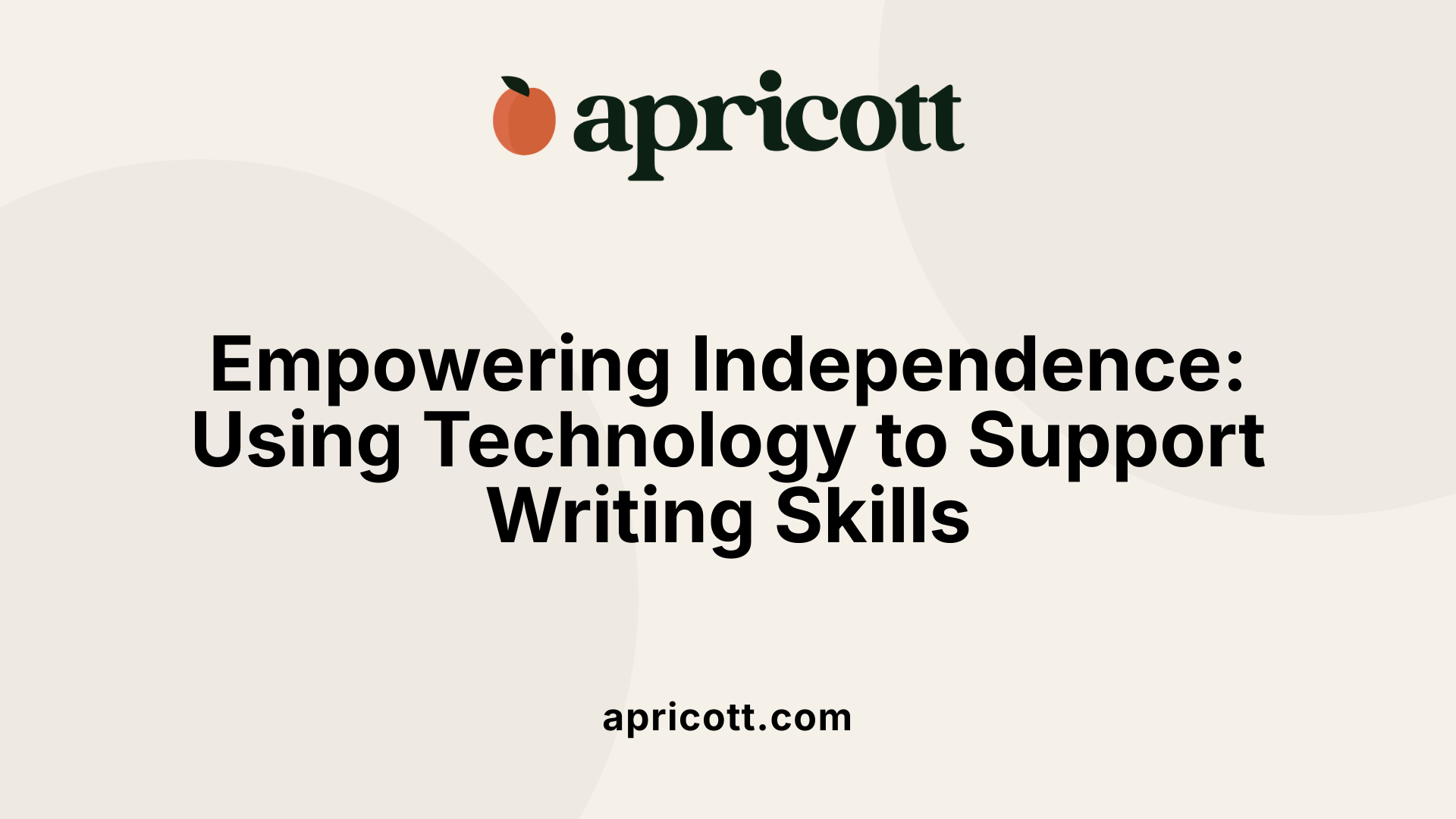
How can assistive technology and other interventions aid writing skills in students with autism?
Assistive technology plays a crucial role in helping students with autism develop their writing skills by overcoming various challenges they often face. These challenges include fine motor difficulties, issues with organization, and language impairments.
Tools like graphic organizers and visual supports, such as picture-based templates or comic strips, help students structure their ideas before writing. Speech-to-text programs enable children to verbalize their thoughts, which are then converted into written words, reducing the stress of fine motor tasks.
Software such as Co:Writer and Kurzweil 3000 offers word prediction and text-to-speech features. These features guide students in selecting appropriate words and understanding their writing, fostering independence. For students who need additional support, response prompting techniques like modeling and scaffolding are integrated into many technological tools.
Personalized interventions with AI-driven applications can adapt to each learner’s pace and style, boosting motivation and confidence. Visual, auditory, and immediate feedback provided by these tools further reinforce learning and engagement.
Occupational therapists and teachers can work together to customize these assistive devices, ensuring they address individual motor, language, and organizational needs. When technology is seamlessly integrated into instruction, it not only makes writing tasks more accessible but also more engaging.
In summary, assistive technology offers diverse methods to support students with autism, making the act of writing more manageable, less stressful, and more aligned with each child’s unique learning profile.
| Technology Tool | Main Function | Benefits | Additional Support |
|---|---|---|---|
| Graphic Organizers | Structuring ideas visually | Improves organization and clarity | Used with visual cues for planning |
| Speech-to-Text Software | Converting speech into written text | Reduces fine motor demands | Useful during initial writing phases |
| Word Prediction (Co:Writer) | Suggests words as students type | Accelerates word retrieval | Supports spelling and grammar |
| Text-to-Speech Systems | Reads written text aloud | Aids in editing and comprehension | Reinforces understanding of text |
| Visual Supports | Pictures, graphic charts, moveable pieces | Enhances understanding and engagement | Tailored to individual learning styles |
How do visual aids and adaptive strategies support children on the autism spectrum?
Visual strategies complement technology by reducing anxiety and increasing understanding. Graphic organizers, moveable pictures, and visual schedules help children follow routines and expectations.
Adaptive methods such as simplified texts and moveable parts in books can teach reading and writing in a meaningful way. These tools make it easier for children to connect ideas, understand sequences, and build confidence.
Combining technology with visual and tactile supports creates comprehensive assistance, allowing students with autism to participate more fully and successfully in writing activities.
| Support Type | Description | Goal | |
|---|---|---|---|
| Graphic Organizers | Visual maps for idea development | Improve idea generation and order | Enhances writing planning |
| Visual Schedules | Visual step-by-step routines | Reduce stress, promote independence | Prepares students for tasks |
| Moveable Books | Texts with tactile components | Increase literacy skills | Engages sensory learners |
By combining these tools with individualized instruction, educators can create a supportive environment that nurtures writing growth and fosters independence among students on the autism spectrum.
Guidance for Educators and Caregivers
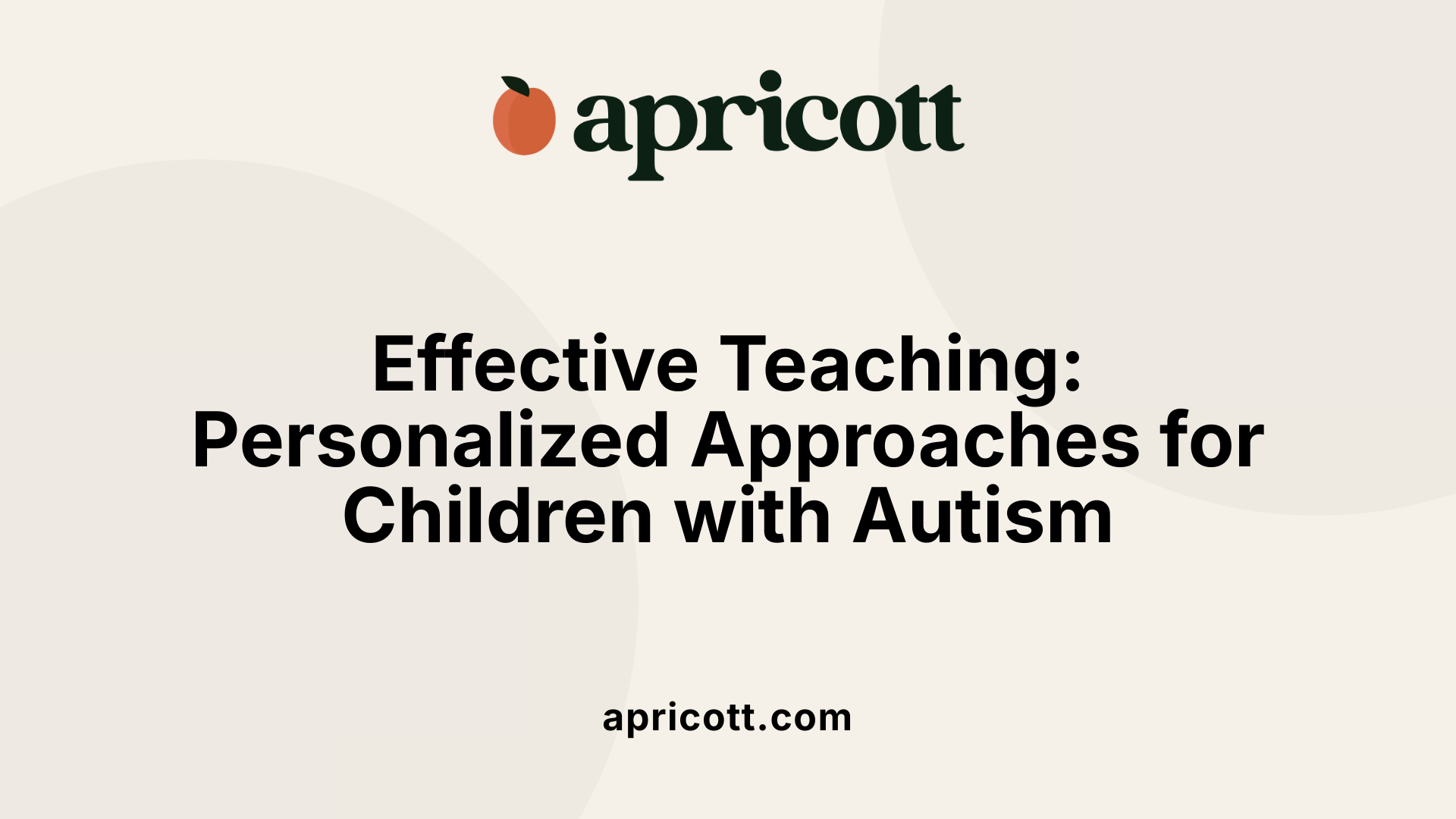
How can educators and caregivers effectively teach writing to children with autism?
Teaching writing to children on the autism spectrum requires a personalized approach that considers each child’s unique needs and learning styles. Starting early with pre-writing activities is crucial. These activities include drawing shapes and tracing, and sensory activities like tracing in sand or clay, which develop fine motor skills essential for writing.
Using visual cues plays a pivotal role. Colorful markers used on vertical surfaces such as easels, stickers, and stamps can attract and maintain a child's attention, making learning more engaging. Visual supports like graphic organizers and comic strips help structure ideas and reduce anxiety, especially when generating and organizing writing.
Integrating assistive technology, such as specialized software like First Author®, can further support literacy development. Typing or using a scribe decreases fine motor demands and promotes independence. Explicit instruction with modeling and scaffolding, alongside visual checklists and social stories, can clarify expectations and ease the revision process.
Routine consistency and positive reinforcement motivate children. Visual schedules and rewards help reinforce desired behaviors and build confidence. Breaking down tasks into manageable steps and reinforcing progress prevents frustration.
Sensory supports, including tactile, proprioceptive, and oral activities, can help children with autism stay focused on writing tasks. Using textured materials or sensory breaks before writing helps meet sensory needs and improve focus.
Collaboration with specialists such as occupational therapists can optimize strategies tailored to each child's sensory profile and motor abilities. Adapting instruction methods—like offering alternate ways to participate in writing activities—ensures these students can achieve functional writing skills.
Assessment and monitoring are fundamental. Using tools like “track changes” in word processors or visual checklists enables students to see their progress and reduces stress related to editing and revising.
Teacher and caregiver training is essential. Supporting students with one-on-one or small-group instruction, and customizing support based on individual preferences, enhances engagement and progress.
In conclusion, applying a comprehensive, individualized, and sensory-aware approach—integrating visual supports, technology, and routine—empowers children with autism to develop essential writing skills and participate meaningfully in educational settings.
Promoting Motivation and Reducing Anxiety
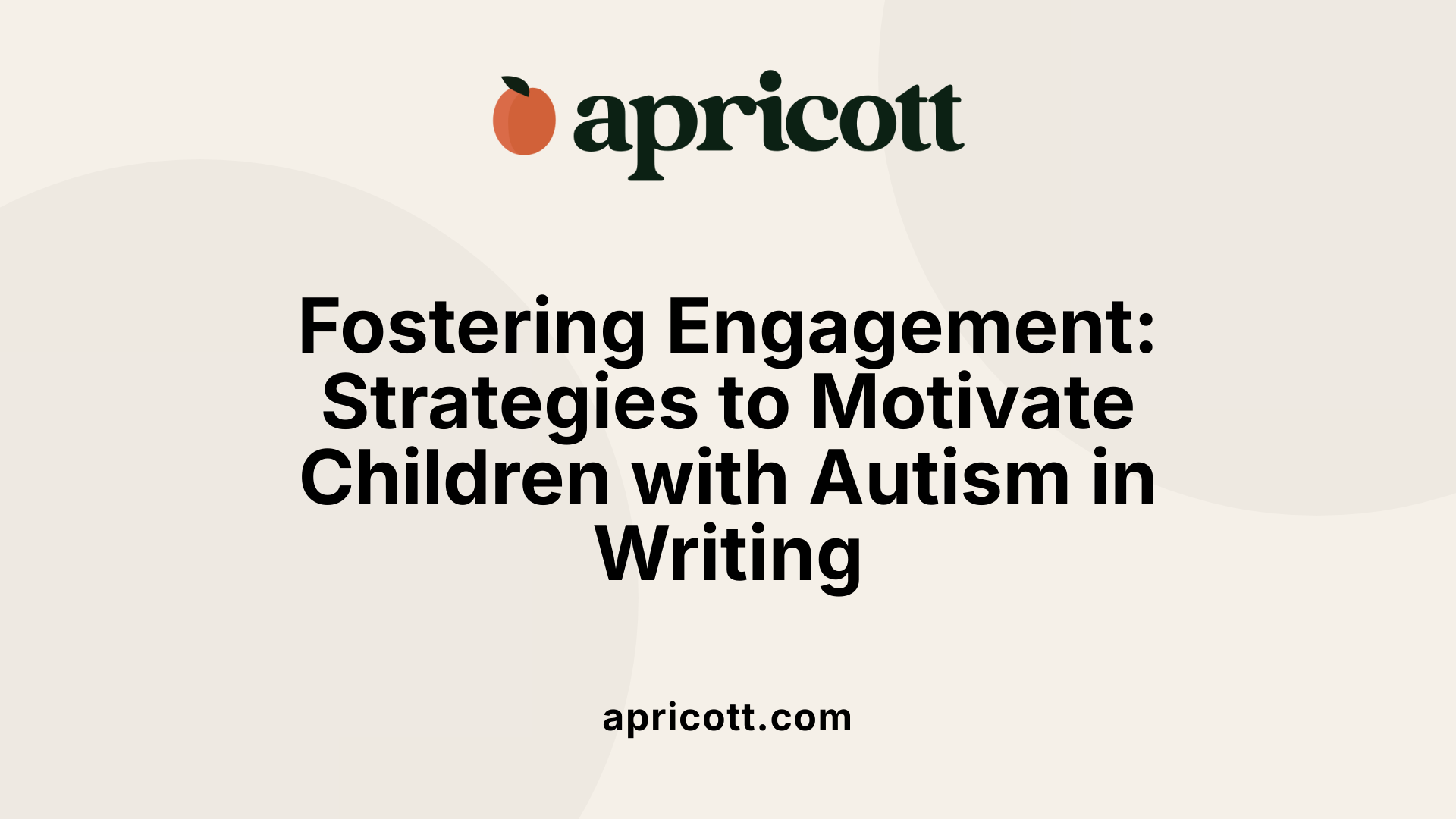
How can support strategies motivate children with autism during writing tasks?
Supporting motivation and lowering anxiety levels in children with autism during writing activities hinges on tailored, visual-based support strategies. Visual cues such as picture schedules, charts, and graphic organizers provide clear expectations and help children understand the sequence of activities, creating a predictable environment that reduces stress.
Incorporating students’ interests and preferences into writing tasks can also boost engagement. When children work on topics they find engaging, they are more likely to participate actively and persist with challenging tasks.
Reward systems play a significant role in fostering motivation. Using tangible rewards, like stickers or small prizes, or social rewards, such as praise and encouragement, reinforces positive behavior and effort. Consistent reinforcement encourages children to stay focused and develop confidence in their abilities.
Creating a steady routine supports children by providing structure and reducing uncertainty. Regular routines, combined with movement breaks, can help maintain attention and prevent fatigue. A calm, organized environment further diminishes anxiety and creates a safe space for practicing writing skills.
Together, these strategies cultivate a supportive setting where children with autism feel confident and motivated to develop their handwriting and writing abilities, ultimately leading to more successful learning experiences.
Creating an Inclusive Environment for Writing Instruction
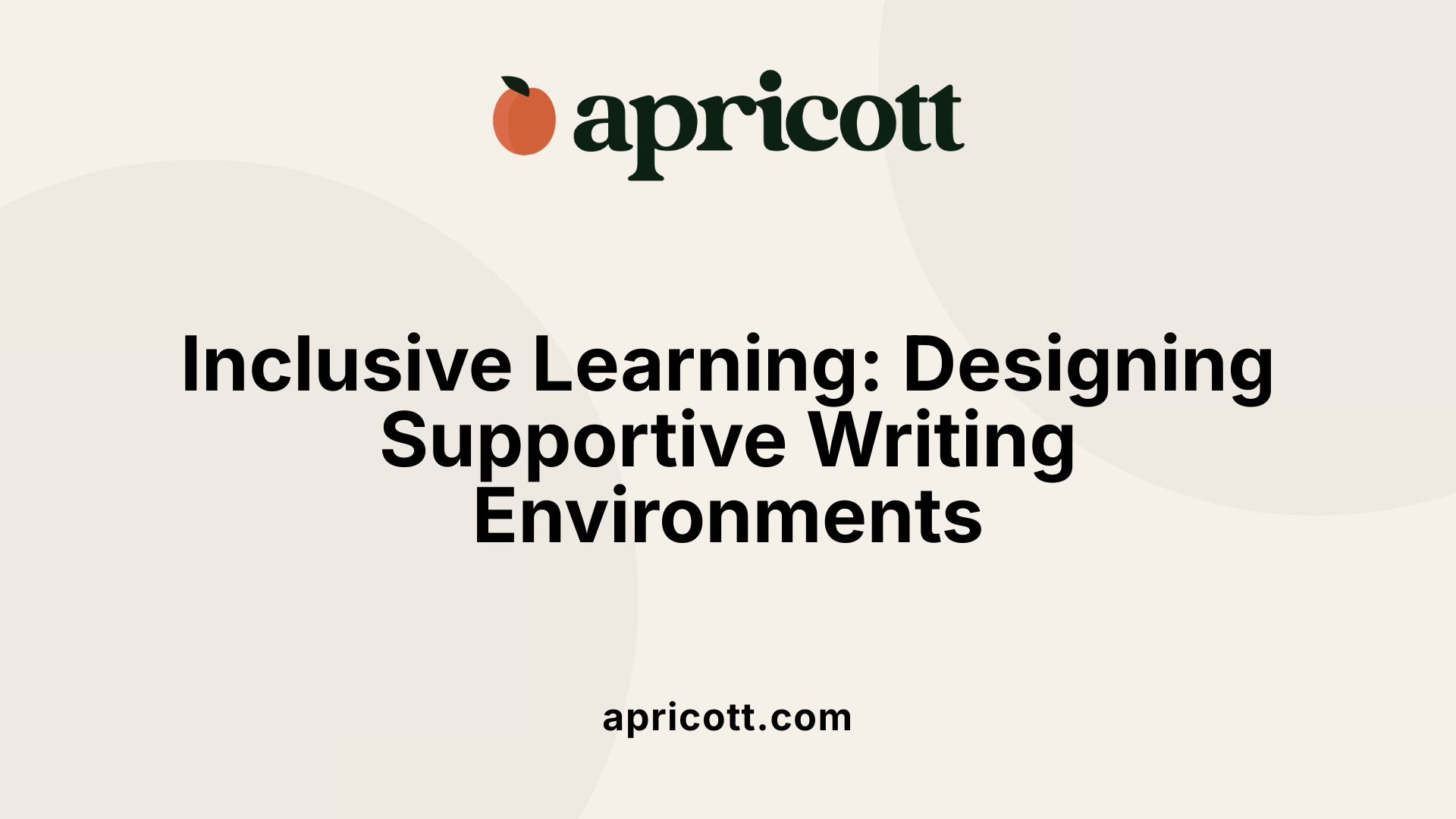
How does understanding neurodiversity influence writing instruction?
Recognizing that children with autism have unique learning styles is fundamental in designing effective writing programs. Neurodiversity emphasizes celebrating these differences rather than viewing them as deficits. Students with autism may process visual information more effectively and benefit from visual cues like stickers, stamps, and graphic organizers. Incorporating these tools can make the learning environment more accessible and engaging.
What collaborative learning strategies support children with autism?
Teamwork and peer interactions are essential for inclusive classroom settings. When students with autism learn alongside neurotypical peers, it fosters understanding and reduces social barriers. Teachers can facilitate peer-mediated activities where classmates assist with tasks like sharing visual supports or practicing sentence building. These collaborations can increase motivation and help develop social communication skills.
How can instruction be tailored to meet individual needs?
Differentiated instruction involves customizing teaching methods to suit each learner’s abilities and interests. For children with autism, this might mean breaking writing tasks into smaller, manageable steps, using visual routines, or providing assistive technology like speech-to-text software. Emphasizing meaningful, functional writing—such as requesting preferred items—can enhance engagement and real-world application.
Implementing inclusive strategies in writing tasks
Creating a supportive space involves several approaches. Visual supports like storyboards or comic strips help organize ideas and understanding of story structure. Consistent routines and visual schedules reduce anxiety and foster independence. Incorporating sensory activities before writing sessions can also improve focus, especially when using textured materials or proprioceptive supports.
Table: Strategies for Teaching Writing to Students with Autism
| Strategy | Description | Benefits |
|---|---|---|
| Visual supports | Graphic organizers, picture prompts, or moveable pieces | Reduce anxiety, clarify expectations, improve understanding |
| Technology supports | Speech-to-text, word banks, video modeling | Enhance engagement, foster independence |
| Differentiated tasks | Breaking writing into steps, personalized goals | Cater to individual needs, build confidence |
| Sensory integration | Tactile materials, proprioceptive activities | Increase focus, reduce sensory overload |
| Collaborative activities | Peer-assisted writing, group projects | Promote social skills, motivation |
Supporting independence and motivation
Using rewards, positive reinforcement, and visual schedules help motivate children and reinforce successful behaviors. Tailoring instruction to each child's pace and preferences ensures they are supported without frustration. As children develop foundational pre-writing and visual-motor skills, their confidence in writing activities grows, leading to increased participation and success.
The Importance of Systematic Instruction and Self-Management
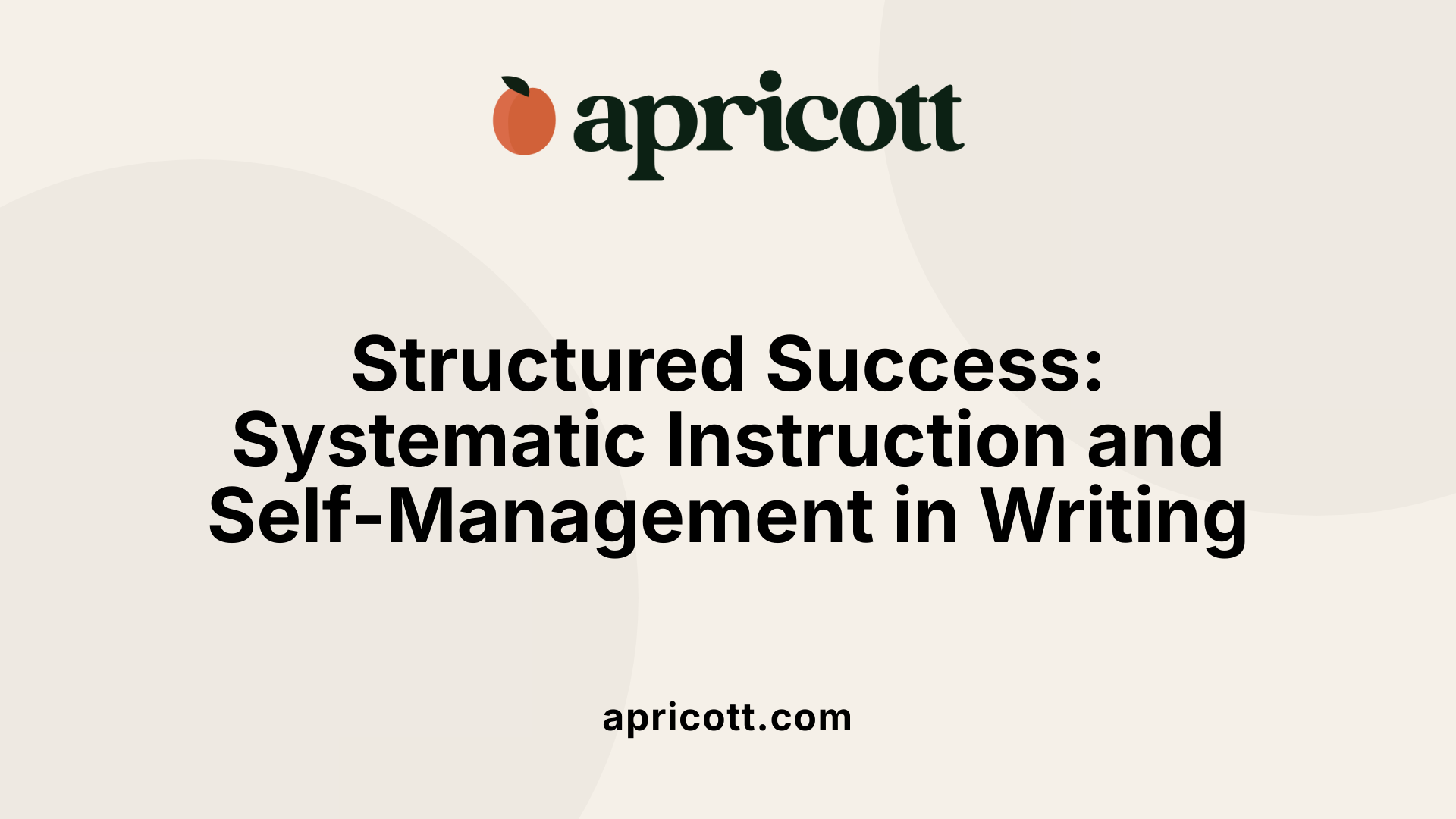
What guidance is available for educators, caregivers, and professionals on teaching writing to children with autism?
Guidance for teaching writing to children with autism emphasizes individualized instruction tailored to each child's strengths, preferences, and sensory needs. Since children with ASD often have unique learning styles, it's essential to adapt teaching methods accordingly.
Using visual supports is highly effective. Visual cues such as picture prompts, graphic organizers, and modeling help children understand expectations and structure their thoughts. For example, graphic organizers can assist in planning ideas before writing, while models demonstrate proper sentence structure.
Pre-writing activities are foundational and include drawing shapes, tracing, and sensory activities like tracing in sand or clay. These activities develop fine motor skills and visual-motor integration, which are crucial for writing. Incorporating colorful markers and using vertical surfaces like easels or walls can also help capture attention and motivate children.
Assistive technology tools, such as software like First Author®, support students by providing alternative ways to generate and organize ideas, write, and revise their work. For children struggling with fine motor skills, typing or using a scribe reduces frustration and facilitates participation.
Structured routines and repetition offer stability, helping reduce anxiety and clarify expectations. Routine activities such as practicing component skills—answering wh- questions, building sentences, and differentiating real from pretend—are vital steps in developing writing proficiency.
Positive reinforcement is central to motivation. Rewards and visual schedules reinforce desired behaviors and celebrate progress, increasing engagement in writing tasks.
Collaboration with specialists, like occupational therapists, can provide additional strategies for sensory integration and motor skills development. Tailoring instruction ensures that each child's unique needs are met, fostering sustainable growth in writing abilities.
In summary, effective teaching involves combining visual supports, structured routines, sensory integration, assistive technology, and individualized strategies. This comprehensive approach helps children with autism develop functional and meaningful writing skills, supporting their participation and communication in various settings.
Future Directions and Research Needs
Gaps in Current Research
While there is a growing body of knowledge on teaching writing to children with autism, significant gaps remain. Much of the existing research focuses on general strategies such as visual supports and technology assistance, yet there is limited high-quality evidence specifically addressing how these methods can be optimized for diverse subgroups within the autism spectrum. For example, the unique sensory, motor, and cognitive profiles of learners vary widely, but current studies often do not differentiate by these factors, making it challenging to develop highly individualized interventions.
Furthermore, although strategies like graphic organizers and visual cues have shown promise, more research is needed to determine which approaches are most effective at different developmental stages or for children with varying attention spans and communication abilities. There is also a paucity of longitudinal studies examining how early intervention strategies impact later writing proficiency in children with ASD.
Emerging Evidence-Based Practices
Recent research highlights the potential of technology-supported interventions to enhance writing skills. Software like First Author® and speech-to-text tools are increasingly recognized for reducing fine motor demands and providing flexible, individualized learning experiences. Visual supports such as graphic organizers, visual schedules, and adapted books continue to show effectiveness in reducing anxiety and increasing understanding and independence in writing tasks.
Explicit instruction methods, such as modeling, scaffolded support, and systematic prompting, are gaining traction as evidence-based practices. These approaches can help children with ASD develop writing skills within meaningful contexts, including functional activities like requesting items or storytelling.
In addition, incorporating self-management strategies, including self-recording and goal setting, fosters independence and motivation. The integration of sensory supports—like textured materials or proprioceptive activities—also contributes to improved focus and visual-motor skills, facilitating writing development.
Tailoring Interventions to Diverse Needs
Children with autism present with a broad spectrum of abilities and challenges, necessitating personalized interventions. While universal strategies can serve as a foundation, successful outcomes depend on customizing supports to fit each child's sensory, motor, and cognitive profiles.
For example, some children benefit from visual cues and structured routines, while others may require multimodal sensory supports or assistive technology. It is essential to continually assess individual responses to interventions and adjust accordingly.
Training educators and therapists to deliver personalized support and to understand the nuances of ASD learning styles is critical. Family involvement also plays a vital role, ensuring consistency across settings and reinforcing skills at home.
Overall, future research should aim to develop clear guidelines for customizing interventions, exploring innovative tools and methodologies, and establishing efficacy across diverse populations within the autism spectrum. This will help bridge existing gaps and foster more inclusive, effective writing instruction for all learners with ASD.
Fostering Independence and Lifelong Skills in Writing
Supporting children with autism in developing writing skills is a multifaceted process that involves understanding their developmental pathways, employing effective strategies, leveraging technology, and creating supportive environments. Collaboration among educators, caregivers, and specialists enhances the success of instruction. By adapting approaches to each child's needs and interests, promoting motivation, and systematically teaching skills, we can empower students with autism to achieve greater independence and meaningful participation in communication and academic settings.
References
- Autism and learning to write
- 'What? You Want Me to Write It Again? ...
- Helping Your Child with Autism Handwriting: 8 Strategies ...
- Using Technology to Support Students with Autism ...
- Writing Centers for Children with Autism
- Teaching Written Expression to Students With Autism ...
- Autism and learning to write
- 'What? You Want Me to Write It Again? ...
.svg)
.svg)








